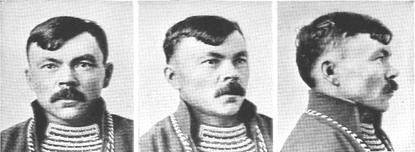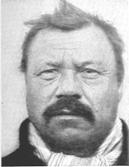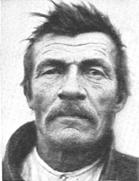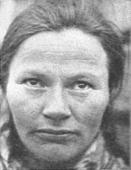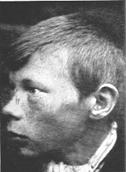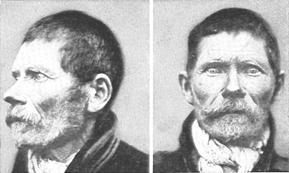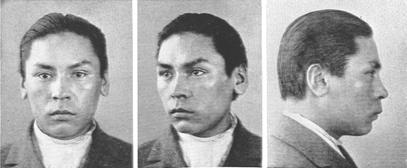|
(Photographic Supplement, Plate 1)
During the Late Pleistocene age, the post-glacial Mesolithic cultural period,
descendants of Upper Palaeolithic hunters lived in North Africa, in most of
Europe, and in western Siberia, where some of them merged into the ancestors of
the mongoloid group of humanity. Even during the Upper Palaeolithic cultural
period in western Europe, some of the hunting peoples showed incipiently
mongoloid racial tendencies. Among the living descendants of these hunters,
these tendencies are more common in the eastern
FIG. 2 (1 view, photo Martin Luther). An unmixed coastal Lapp from Norway, who looks just as Alpine as does Fig. 1.
FIG. 3 (1 view, photo Martin Luther). Another unmixed coastal Lapp from Norway, who shows more of an incipiently mongoloid character than do the two preceding. Like the others, this individual is brunet white in skin color, dark-haired and dark-eyed.
FIG. 4 (1 view, photo Martin Luther). The incipiently mongoloid features found in some Lapps are usually more pronounced in the women than in the men. This Norwegian Lapp woman, who possesses these features,.is seen to resemble facially the type commonly known as "Slavic" or "East Baltic," in central and eastern Europe. There is nothing really mongoloid about these features; the resemblance is remote and collateral.
FIG.5. (1 view, photo Martin Luther). This 18 year old Norwegian Lapp boy possesses all of the most characteristically Lappish features of the face: a shallow mandible; a pointed, retreating chin; a lateral malar prominence; facial prognathism; a pointed and elevated nasal tip; and a low nasal bridge.
FIG. 6 (2 views, photo Martin Luther). A Norwegian Lapp, with light skin, light eyes, and brown hair. Although considered a pure Lapp, this man has many Nordic traits. He is much more typical of the Lapps as a whole than are Figs. 1, 2, or 3, who were chosen to represent the Lappish prototype rather than the Lapps as a group.
FIG. 7 (3 views, Anthropological Laboratory, Institute of Peoples of the North, Leningrad). A 20 year old Samoyed, from northern Russia. This young Samoyed, while by no means exaggeratedly mongoloid, is much more so than any unmixed Lapp; his coarse, black, and straight hair, his dark skin, and black iris color, as well as his facial features, show that he is at least partially descended from fully evolved mongoloid ancestors. Samoyeds vary greatly in mongoloid content; this individual seems to approach the mean in this respect. The arrival of the Samoyeds in northern Europe was later than that of the Lapps; their point of departure in Asia farther east.
|
